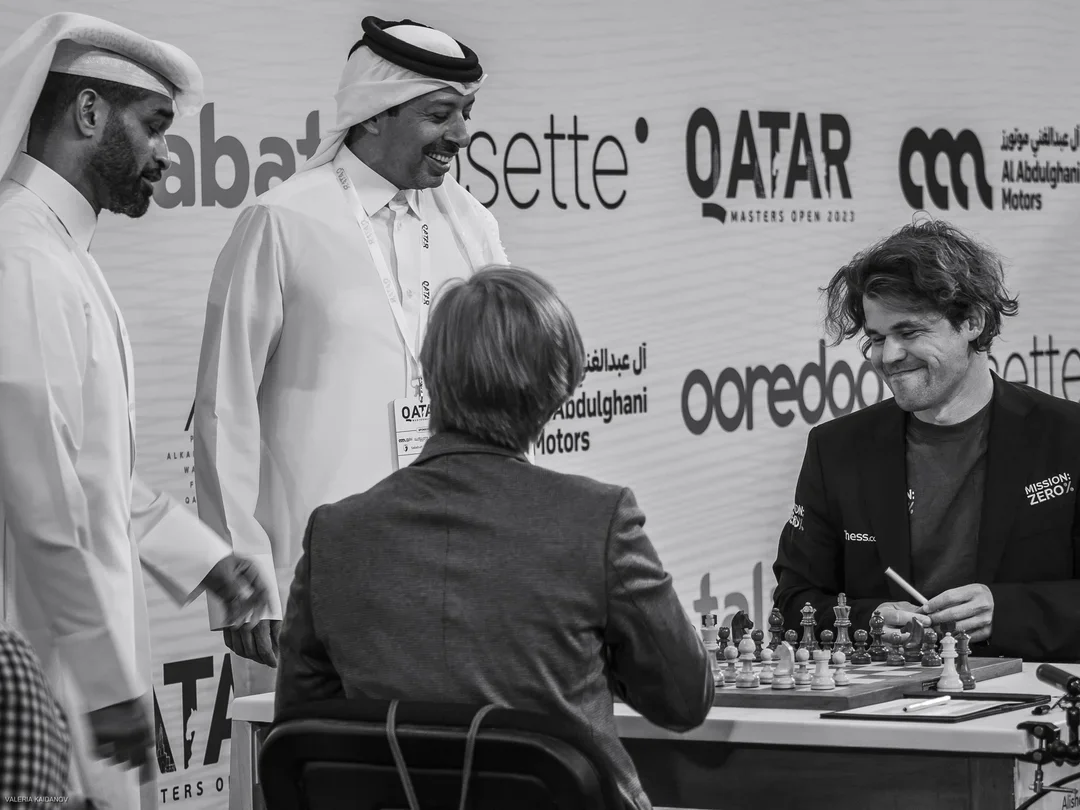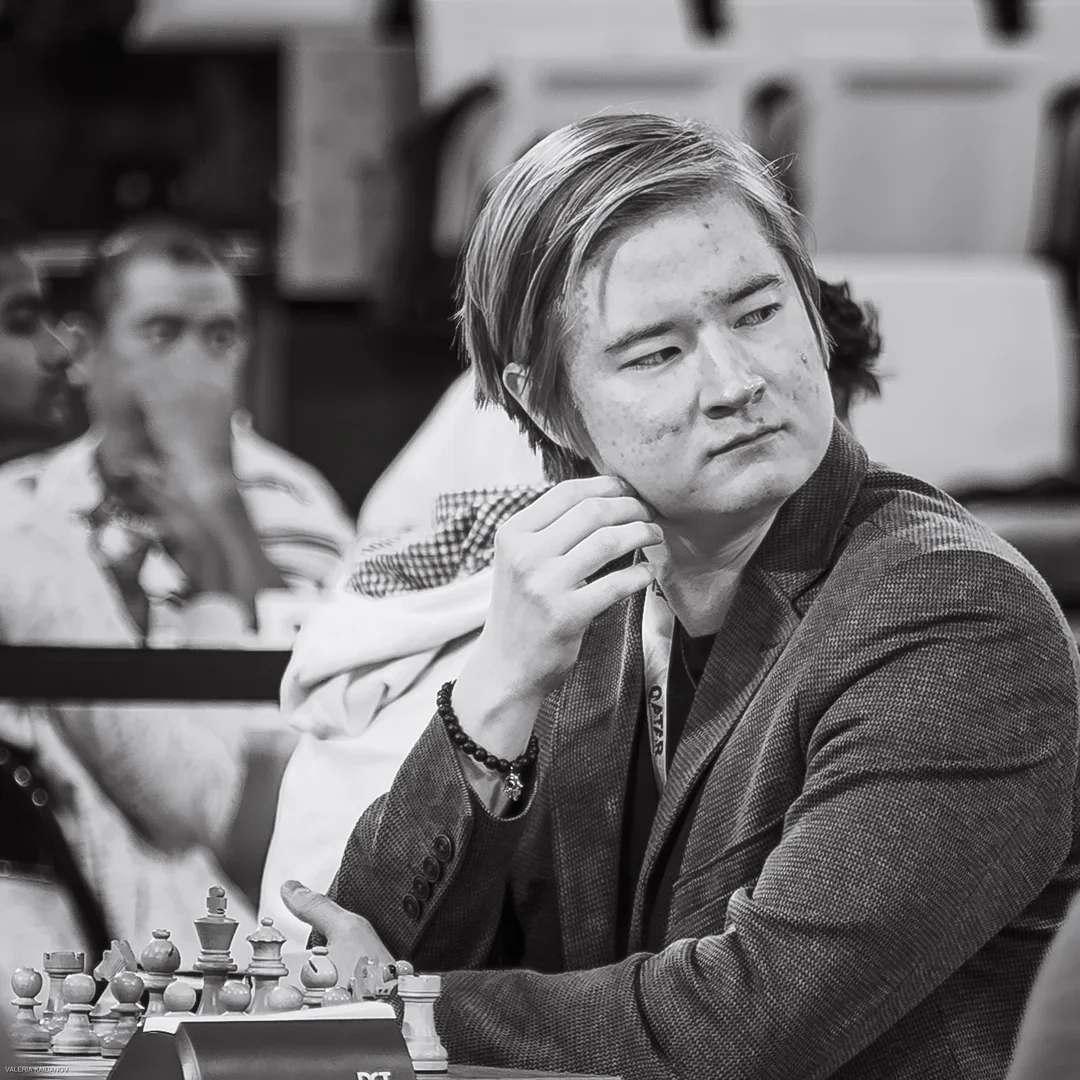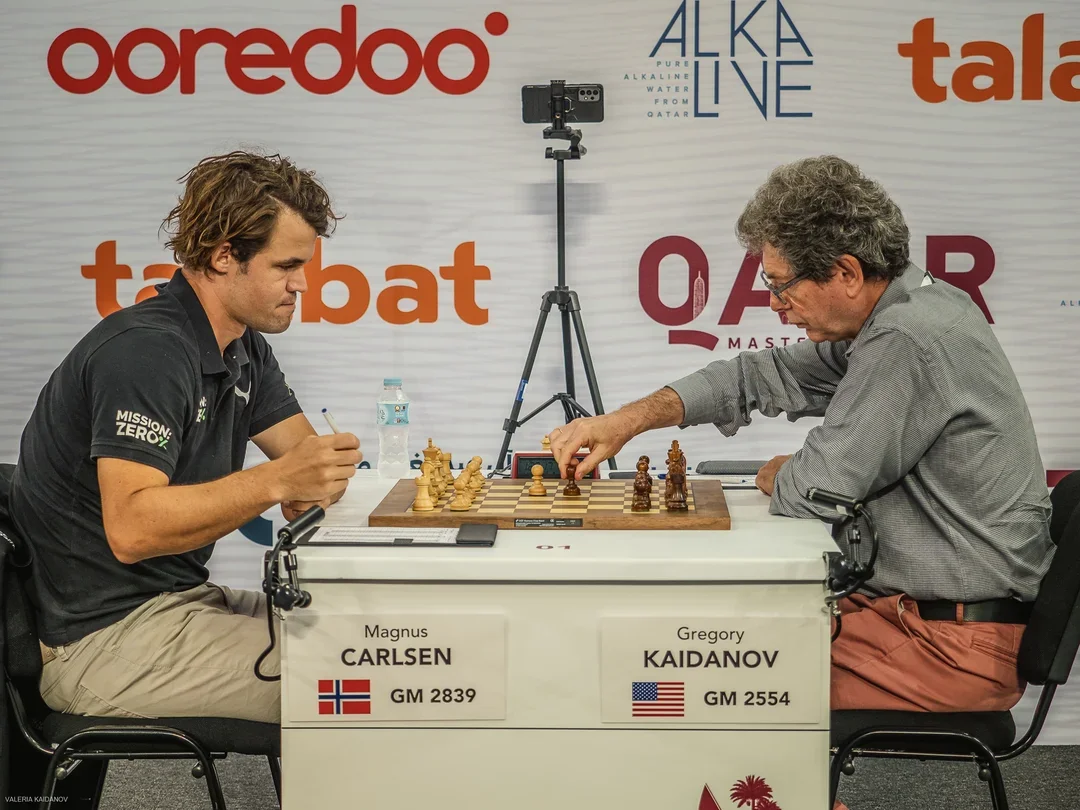Editor's note: This story first appeared in the January 2024 issue of Chess Life Magazine. Consider becoming a US Chess member for more content like this — access to digital editions of both Chess Life and Chess Life Kids is a member benefit, and you can receive print editions of both magazines for a small add-on fee.
When I learned that Magnus Carlsen was going to play in an open tournament in Doha, Qatar, I immediately marked those dates in my calendar. At first, there was no response from the organizers, and after some weeks, I gave up on the idea. However, and to my great pleasure, the invitation eventually came.

Generally speaking, I prefer to not play two tournaments in a row, but since I committed to the World Senior Team Championship earlier on, I had to face the reality of playing back-to-back tournaments with only 10 days in between. I know many professional grandmasters will laugh at me; today, it seems to be a common belief that 10 days between tournaments is a luxury! To prepare myself, I spent the time in between tournaments mostly solving calculation puzzles.
I knew the Qatar Masters would be very strong, but it was a pleasant surprise to find myself as the #35 seed with my FIDE rating of 2554. The top seeds, besides Carlsen, were GMs Hikaru Nakamura and Anish Giri. There was a huge Indian delegation, boasting 75 (!!) players out of total 158, including the young stars Gukesh, Erigaisi, and Nihal Sarin. The second largest contingent was from Uzbekistan, with 14 players. Both nations showed their strength and immense promise — six of the top eight finishers represented those two countries.

At 64, I was by far the oldest player in the field. As a matter of fact, there was just one other player over the age of 40! The average age of my opponents was 22, with Magnus being the oldest at the ancient age of 32!
Already the second round produced a huge surprise: Carlsen lost to the little-known 23-year-old Kazakh GM, Alisher Suleymenov. And it wasn’t just that he lost — it would be fair to say that Magnus got crushed.
Magnus himself admitted it in his tweet, adding, “This is not to accuse my opponent of anything, who played an amazing game and deserved to win, but honestly, as soon as I saw my opponent was wearing a watch early in the game, I lost my ability to concentrate. I did ask an arbiter during the game whether watches were allowed, and he clarified that smartwatches were banned, but not analog watches. This seems to be against FIDE rules for events of this stature.”
This tweet created a lot of speculation and internet memes. People were accusing Alisher of cheating, despite the fact that Carlsen himself did not. Just as we saw after the famous game Niemann – Carlsen in St. Louis, the security in tournament hall increased starting with the third round.
Here I would like to share my own method of determining whether someone used a computer assistance. This method is neither scientific nor reliable. However, it helps me to form my own opinion on the subject.
Many of my students and friends know my love for “solitaire chess,” which is also known as “guess a move.” The idea is familiar to Chess Life readers, who have been playing “solitaire chess” with Bruce Pandolfini for many years now. I took the Suleymenov – Carlsen game and tried to guess the moves for White, starting from move 15. Unless otherwise noted, my moves were identical to Suleymenov’s.
After two rounds I had 2/2, and I caught myself thinking (somewhat bittersweetly) “This is the last time in my life that I am ahead of Magnus Carlsen in tournament standings!” Indeed, I lost in round three to the 17-year-old GM Javokhir Sindarov, while Magnus won. But after round seven I found myself a half-point ahead of Magnus.

It was in that round that I played this game, which received some attention on the internet.
As the lowest-rated player in my point group, I was paired against Carlsen in round eight. Needless to say, I was very excited.
While I lost this game, I felt good about my play. In the last round I beat Vaishali, who at this point had already secured her third and final GM norm. Since Magnus drew the Indian GM Puranik, we ending up tying for ninth place with 12 other players, which was a great result for me, and a terrible result for him!
Before the last round the impressive young GM Arjun Erigaisi was leading with 6½/8, and he played Black against another elite talent, GM Nodirbek Abdusattorov. Arjun was under a lot of pressure the whole game, but in the end, when the worst seemed over, tragedy struck.
So it was two Uzbek grandmasters named Nodirbek who tied for first place with 7/9. GM Nodirbek Yakubboev, 21, won the tiebreak to take home the first-place trophy. Considering their countryman, GM Javokhir Sindarov, was among the six players to tie for third with 6½/9, the tournament must be seen as a huge success for Uzbek chess.
Here is one final game, a nice effort from the tournament winner.
Categories
Archives
- January 2026 (2)
- December 2025 (27)
- November 2025 (29)
- October 2025 (39)
- September 2025 (27)
- August 2025 (29)
- July 2025 (43)
- June 2025 (25)
- May 2025 (24)
- April 2025 (29)
- March 2025 (29)
- February 2025 (20)
- January 2025 (24)
- December 2024 (34)
- November 2024 (18)
- October 2024 (35)
- September 2024 (23)
- August 2024 (27)
- July 2024 (44)
- June 2024 (27)
- May 2024 (31)
- April 2024 (51)
- March 2024 (34)
- February 2024 (25)
- January 2024 (26)
- December 2023 (29)
- November 2023 (26)
- October 2023 (37)
- September 2023 (27)
- August 2023 (37)
- July 2023 (47)
- June 2023 (33)
- May 2023 (37)
- April 2023 (45)
- March 2023 (37)
- February 2023 (28)
- January 2023 (31)
- December 2022 (23)
- November 2022 (32)
- October 2022 (31)
- September 2022 (19)
- August 2022 (39)
- July 2022 (32)
- June 2022 (35)
- May 2022 (21)
- April 2022 (31)
- March 2022 (33)
- February 2022 (21)
- January 2022 (27)
- December 2021 (36)
- November 2021 (34)
- October 2021 (25)
- September 2021 (25)
- August 2021 (41)
- July 2021 (36)
- June 2021 (29)
- May 2021 (29)
- April 2021 (31)
- March 2021 (33)
- February 2021 (28)
- January 2021 (29)
- December 2020 (38)
- November 2020 (40)
- October 2020 (41)
- September 2020 (35)
- August 2020 (38)
- July 2020 (36)
- June 2020 (46)
- May 2020 (42)
- April 2020 (37)
- March 2020 (60)
- February 2020 (38)
- January 2020 (45)
- December 2019 (34)
- November 2019 (35)
- October 2019 (42)
- September 2019 (45)
- August 2019 (56)
- July 2019 (44)
- June 2019 (35)
- May 2019 (40)
- April 2019 (48)
- March 2019 (61)
- February 2019 (39)
- January 2019 (30)
- December 2018 (29)
- November 2018 (51)
- October 2018 (45)
- September 2018 (29)
- August 2018 (49)
- July 2018 (35)
- June 2018 (31)
- May 2018 (39)
- April 2018 (31)
- March 2018 (26)
- February 2018 (33)
- January 2018 (30)
- December 2017 (26)
- November 2017 (24)
- October 2017 (30)
- September 2017 (30)
- August 2017 (31)
- July 2017 (28)
- June 2017 (32)
- May 2017 (26)
- April 2017 (37)
- March 2017 (28)
- February 2017 (30)
- January 2017 (27)
- December 2016 (29)
- November 2016 (24)
- October 2016 (32)
- September 2016 (31)
- August 2016 (27)
- July 2016 (24)
- June 2016 (26)
- May 2016 (19)
- April 2016 (30)
- March 2016 (36)
- February 2016 (28)
- January 2016 (32)
- December 2015 (26)
- November 2015 (23)
- October 2015 (16)
- September 2015 (28)
- August 2015 (28)
- July 2015 (6)
- June 2015 (1)
- May 2015 (2)
- April 2015 (1)
- February 2015 (3)
- January 2015 (1)
- December 2014 (1)
- July 2010 (1)
- October 1991 (1)
- August 1989 (1)
- January 1988 (1)
- December 1983 (1)







